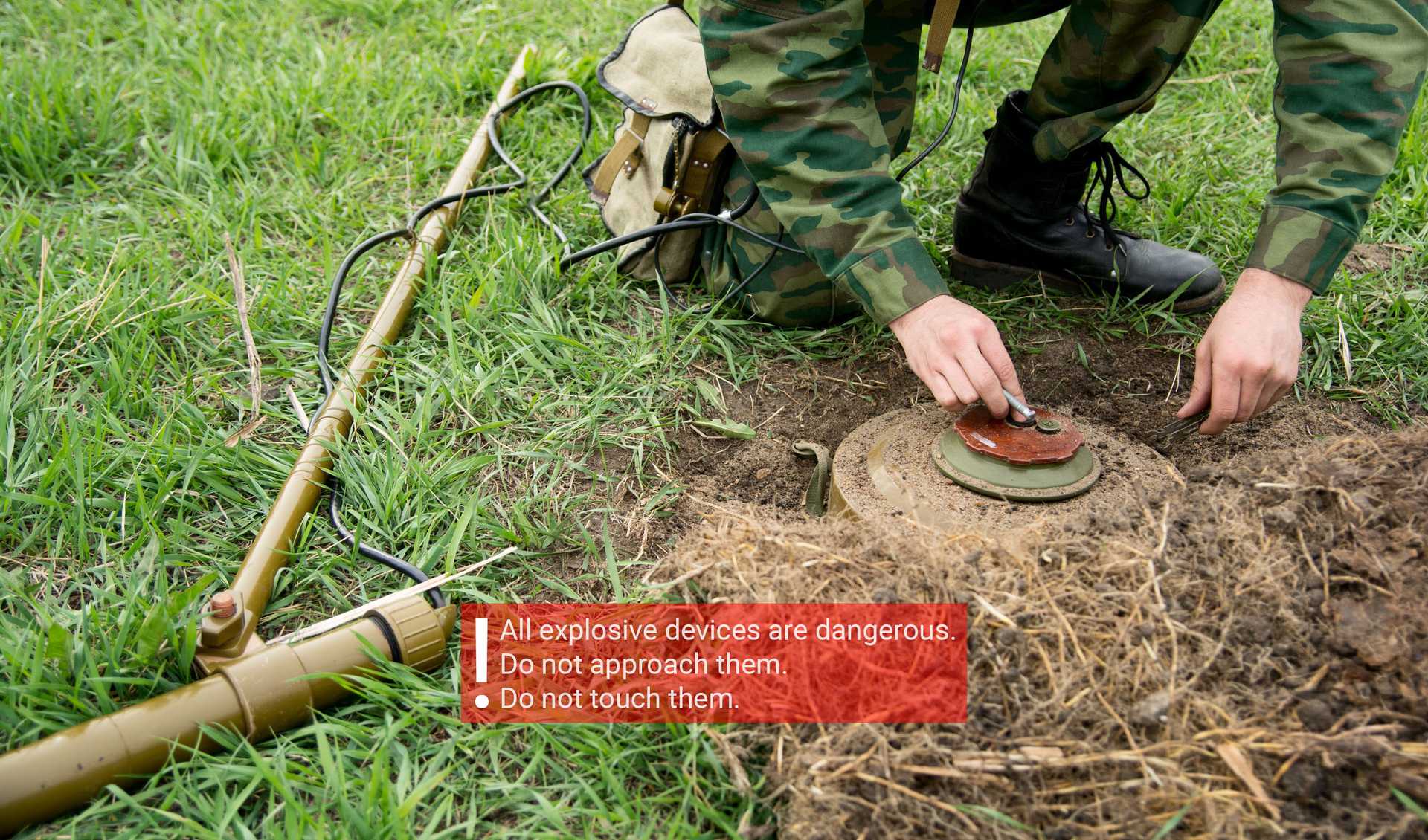
Above: Soldier carefully handling a landmine.
Ivanov Vadim | Dreamstime.com
Humanitarian Arms Control I – Anti-Personnel Mines and Cluster Munitions
Anti-personnel landmines and cluster munitions have been banned for their harmful effects on civilians. Treaties such as the Mine Ban Treaty (1997) and the Convention on Cluster Munitions (2008) focus on human security, requiring weapon clearance and victim assistance, and inspiring broader humanitarian disarmament efforts.
Start learning unitChapters
Learning Objectives
Anti-personnel landmines and cluster munitions have been banned due to their devastating impact on civilians and the fact that they hinder post-conflict recovery. In the 1980s and 1990s, many civilians were killed or injured by landmines that were remnants of Cold War-era conflicts. This humanitarian crisis prompted a global campaign to ban landmines that shifted the focus from state security to ‘human security’ and led to humanitarian arms control. The 1997 Mine Ban Treaty (MBT) and the 2008 Convention on Cluster Munitions (CCM) followed. These treaties ban entire categories of weapons due to their human impact and they require clearance of contaminated areas and victim assistance. They have also inspired efforts to control small arms, nuclear weapons and other means of warfare, thus advancing humanitarian disarmament.
After completing the unit you will be able to:
- identify the key features of humanitarian arms control;
- distinguish between traditional arms control and humanitarian arms control;
- apply a humanitarian framework to analyse conflict and emerging weapons issues;
- understand current challenges to the consolidation and strengthening of humanitarian arms control.
Credits
Disclosures
Content Warning
This learning unit may contain audio-visual material or texts, which may not be suitable for all audiences.
Funding
This Learning Unit was produced with financial assistance from the European Union. The contents of this Learning Unit are however the sole responsibility of the author(s) and should under no circumstances be regarded as reflecting the position of the European Union.
External Links
The site may contain hyperlink text references (’Links’) to other sites that are offered by third parties. These Links are made available solely for the purpose of information and as an additional service for users. Only the respective operator is responsible for all content and statements on linked Internet sites. Therefore, PRIF cannot guarantee the correctness and accuracy or any other aspect of third party sites.
Preferred Citation
Prof Margarita Petrova, "Humanitarian Arms Control I – Anti-Personnel Mines and Cluster Munitions" in EUNPDC eLearning, ed. Niklas Schörnig, Peace Research Institute Frankfurt. Available at https://eunpdc-elearning.netlify.app/lu-09/, last modified 11 December 2025
Editorial Note
This is a beta version of the learning unit, which is regularly optimised. Please report any factual errors or discrepancies to the publisher. (support(at)nonproliferation-elearning.eu). Please note that although the original text was written by the authors, the video production and simplifications were carried out by PRIF.
